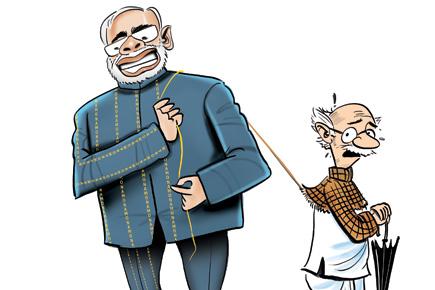The first film to use the technique of parallel cutting, or cross-cutting, was DW Griffiths’ Birth of A Nation, made in 1915. Parallel cutting edits back and forth between two or more sets of events that occur simultaneously, in different locations, thereby showing how they impact each other, and are linked conceptually

Pinstripes
 The first film to use the technique of parallel cutting, or cross-cutting, was DW Griffiths’ Birth of A Nation, made in 1915. Parallel cutting edits back and forth between two or more sets of events that occur simultaneously, in different locations, thereby showing how they impact each other, and are linked conceptually.
The first film to use the technique of parallel cutting, or cross-cutting, was DW Griffiths’ Birth of A Nation, made in 1915. Parallel cutting edits back and forth between two or more sets of events that occur simultaneously, in different locations, thereby showing how they impact each other, and are linked conceptually.
A century later, India remade this American classic, not as Birth of A Nation, but close enough: Republic Day, 2015. Like nukkad nataks or Hindi films, forms which embrace life’s genuine melodrama, this movie-day too was rich with irony, running in parallel narratives like pinstripes on a suit.
ADVERTISEMENT

Illustration / Amit Bbandre
Yes indeed, on this day as everyone knows, a sartorial event took place. Our Prime Minister wore a R10 lakh bespoke suit whose pin stripes were made of his name in a repeated gold mantra. How should we read this? Should we mock it as being vulgar — as some sniffily did?
Should we pooh-pooh these sniffers as snobs (which, some may well be)? Should we praise the PM as non-hypocritical because as one worthy columnist said, what you see is what you get after which he went on to contradict this philosophical utterance by saying that though he may seem Gujarati the PM is basically a Punjabi at heart (as a Punjabi dunno if I buy it, but I’m open to persuasion – only because us Punjabis, we like to, you know, buy things). The thing is, all this seems very literal and realistic and realism in my experience, often is the dress of agenda. Symbolism, on the other hand, makes me feel it, because the truth can only be felt, not spoken.
So, symbolically, when the body of the nation’s prime minister is stamped with an individual’s name (instead of vice versa), what ideas does a garment render tangible? If khadi was about self-reliance, then I suppose our new ideal is consumerism, branding, exclusivity, not inclusivity, the individual not to the group, the polity and fashioning consensus.
For a minute I will break narrative here and go to flashback (Hindi picture does not adhere to pure forms baba, stop frowning). I’m thinking of Mayawati’s handbags and Mayawati’s cake. How no one really defended that and said what you see is what you get. Because actually no, what you did not get then was, no one liked it when a Dalit leader behaved with the same venality or flamboyance or arrogance or narcissism as other communities. Some people get slammed for the same thing other people get praised for. After all no action exists in a vacuum, its meaning comes only from its context, no? That is why, we have parallel cutting, and so we leave the flashback and move on to the other narrative stripe.
Which is that the government issued a Republic Day advertisement with an image of the preamble to the Constitution that omitted the words “secular” and “socialist.” How should we see this? A mistake as the I&B minister claimed. Phew, government departments will always be inefficient, chalo. What you see is what you will not get? Or, as the Congress alleged, a prelude to eventually inserting, the words ‘communal’ and ‘corporate’? Sly attempt to get away with a unilateral decision on what needs consulting?
Maybe only the day’s third narrative symbolism was least confusing. On Republic Day, India lost its most popular cartoonist, RK Laxman. On this sartorially successful day, the common man with his funny checked kurta in which narrative stripes criss-crossed, ceased to be the symbol of choice. For now, until some other parallel narrative inserts itself into the pinstripe, anyway, unfurling new truths. Picture is always baki, senorita.
Paromita Vohra is an award-winning Mumbai-based filmmaker, writer and curator working with fiction and non-fiction. Reach her at www.parodevi.com.
The views expressed in this column are the individual’s and don’t represent those of the paper.
 Subscribe today by clicking the link and stay updated with the latest news!" Click here!
Subscribe today by clicking the link and stay updated with the latest news!" Click here!







